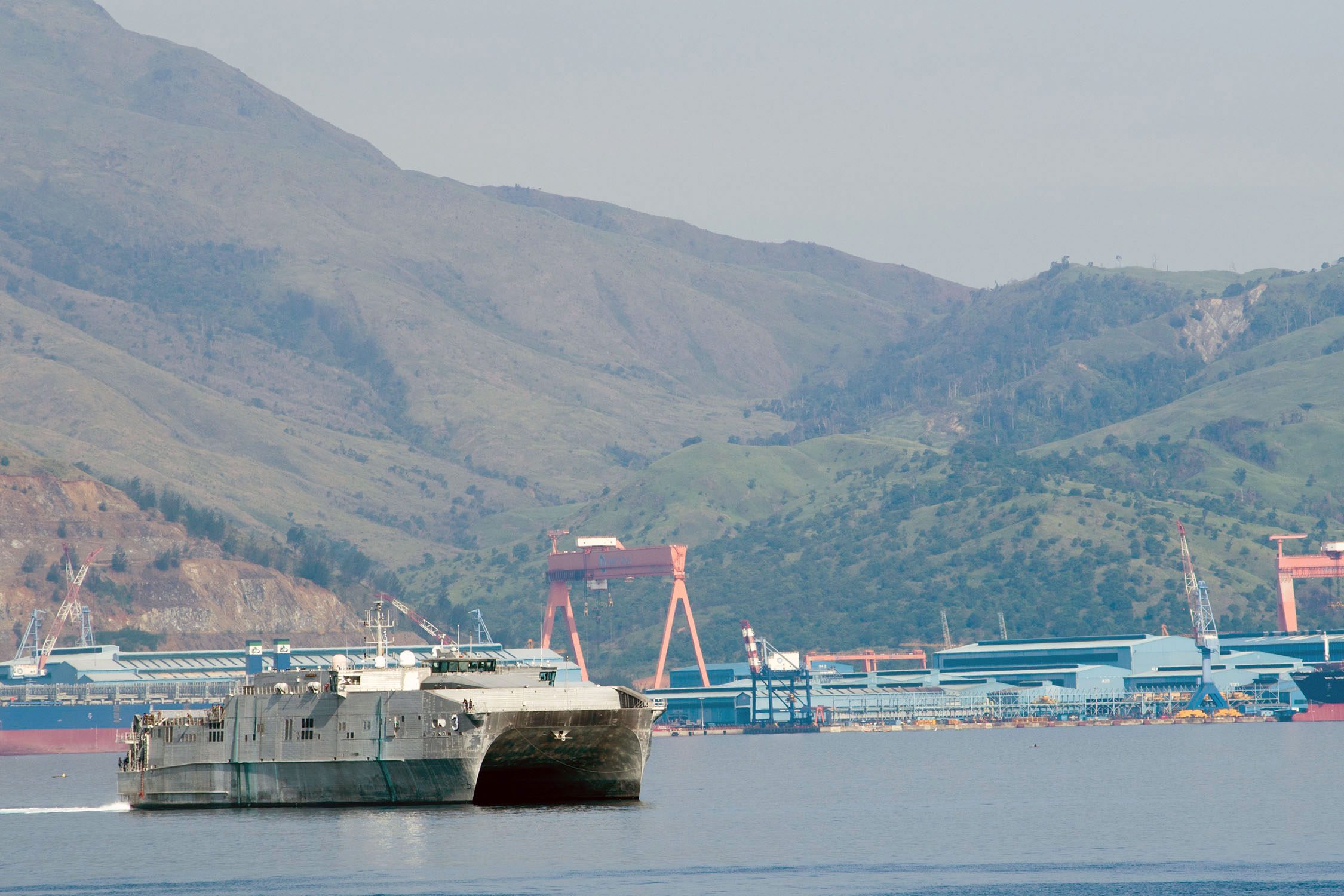The Austal-built USNS Millinocket (JHSV 3) transits Subic Bay in front of the Hanjin Philippines shipyard, June 18, 2017. U.S. Navy Photo
 MANILA, Oct 9 (Reuters) – Australian shipbuilder Austal Ltd and U.S. private equity firm are considering a joint bid for a strategically located but debt-laden Philippine shipyard, the facility’s trustee said on Wednesday.
MANILA, Oct 9 (Reuters) – Australian shipbuilder Austal Ltd and U.S. private equity firm are considering a joint bid for a strategically located but debt-laden Philippine shipyard, the facility’s trustee said on Wednesday.
Hanjin Philippines, a unit of South Korea’s Hanjin Heavy Industries & Construction Co Ltd, in January defaulted on $1.3 billion in loans, of which $900 million is owed to South Korean banks and the rest to five Philippine lenders.
Austal and Cerberus are interested in the distressed shipyard, and they have two to three weeks to formally submit a bid, receivership lawyer Rosario Bernaldo told Reuters.
“What I want to happen is that the shipyard operates again instead of being a white elephant,” Bernaldo said, adding that Dutch and Italians firms had inquired about the facility early on.
Austal, which operates a shipbuilding facility in central Philippines, and Cerberus did not respond to requests for comment.
Hanjin Philippines’ shipyard until recently employed 20,000 workers in Subic Bay, which is considered an important asset because of the its shelter, deep water and access to the South China Sea. Until 1992, Subic was home to a U.S. navy base.
The creditors are engaged in exclusive talks with a potential bidder, said Eugene Acevedo, president of mid-sized Rizal Commercial Banking Corp (RCBC). He declined to name the company given non-disclosure agreements.
“It has to be exclusive because otherwise, it would be unfair for the white knight to put an effort on this huge thing,” Acevedo told Reuters. Hanjin borrowed $145 million from RCBC.
The sale of the shipyard, which was battered by a slump in the global shipping and shipbuilding industry, triggered geo-political concerns after it drew interest from two unidentified Chinese firms.
China is expanding its presence in the South China Sea, a trade route for $3 trillion of commerce each year.
(Reporting by Neil Jerome Morales; Editing by Kim Coghill)
(c) Copyright Thomson Reuters 2019.

 Join The Club
Join The Club











